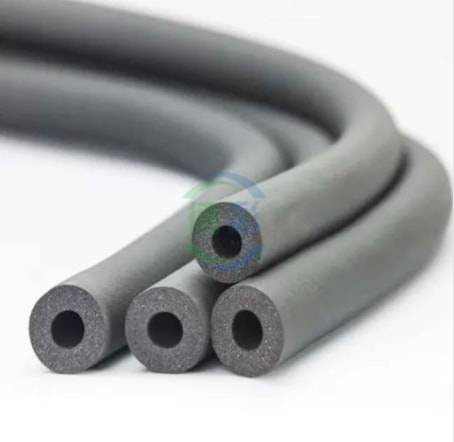Rubber and Plastic Insulation Pipe

Tootest
There are many types of rubber and plastic pipes, and the common ones are as follows:
1. PVC pipe: polyvinyl chloride pipe, acid and alkali resistant, corrosion resistant, widely used in water supply and drainage, chemical industry and other fields.
2. PE pipe: polyethylene pipe, good flexibility, low temperature resistance, commonly used in gas transportation, agricultural irrigation, etc.
3. PP pipe: polypropylene pipe, high temperature resistance, chemical corrosion resistance, suitable for food grade transportation and industrial pipes.
4. PB pipe: polybutylene pipe, high temperature and high pressure resistance, long life, mostly used in hot water systems.
5. ABS pipe: acrylonitrile-butadiene-styrene pipe, high strength, impact resistance, suitable for industrial pipeline systems.
6. Rubber pipe: made of natural rubber or synthetic rubber, with good elasticity and wear resistance, used for various liquids and gas transportation.
7. Silicone tube: made of silicone rubber, high temperature and low temperature resistance, suitable for food, medical and other industries.
8. Neoprene tube: oil resistance, good aging resistance, suitable for oil transportation and chemical equipment.
9. Nitrile rubber tube: excellent oil resistance, suitable for oil and fuel transportation.
10. Fluororubber tube: resistant to high temperature and corrosion, suitable for the transportation of strong acid, strong alkali and high temperature media.
Rubber-plastic insulation pipe is generally made of rubber and plastic, and is an elastic closed-cell insulation product that has been foamed. Due to its special material selection, it has cold-resistant, heat-resistant and flame-retardant properties, so it is widely used in various pipeline or container surface projects.
Product Features
The rubber-plastic insulation pipe has a low thermal conductivity and a completely closed-cell structure, with a long-lasting and good insulation effect; the material is completely isolated from water vapor, does not absorb water, is not easy to burn, does not condense, and has a long service life. After SGS testing, the actual measured value is far lower than the EU standard value for non-toxic substances, and it is healthy and safe to use; the appearance is soft and beautiful, easy to bend, and the construction is convenient and quick, and no other auxiliary materials are required.
Advantages of rubber-plastic insulation pipes
1. Good environmental performance
It does not contain harmful substances in the atmosphere and will not produce pollutants during installation;
2. High fire resistance
Rubber-plastic insulation pipes have the characteristics of not burning when exposed to fire and are rated as B1 flame retardant materials;
3. Good thermal insulation performance
The lower thermal conductivity can effectively isolate heat conduction;
4. Low water absorption coefficient
Since the plastic insulation pipe is a closed structure, it is difficult for external water molecules to penetrate into the material;
5. Low density and light weight
It has good lightness and reduces the amount of material used;
6. Long service life
It has the characteristics of corrosion resistance, freeze-thaw resistance, and aging resistance;
7. Easy installation
The appearance is flat and regular, and no external decoration is required;
Application of rubber-plastic insulation pipes
Generally used as insulation materials for high-rise buildings and roofs next to industry and construction industries. Rubber-plastic insulation pipes are often used for insulation treatment next to central air conditioners, constant temperature warehouses, and cold storage. Due to its excellent thermal insulation ability, it is also widely used in many fields such as industry, construction, home appliances, and transportation. Since rubber-plastic pipes also have certain sound insulation and shock absorption functions, they are generally filled in areas such as door panels

